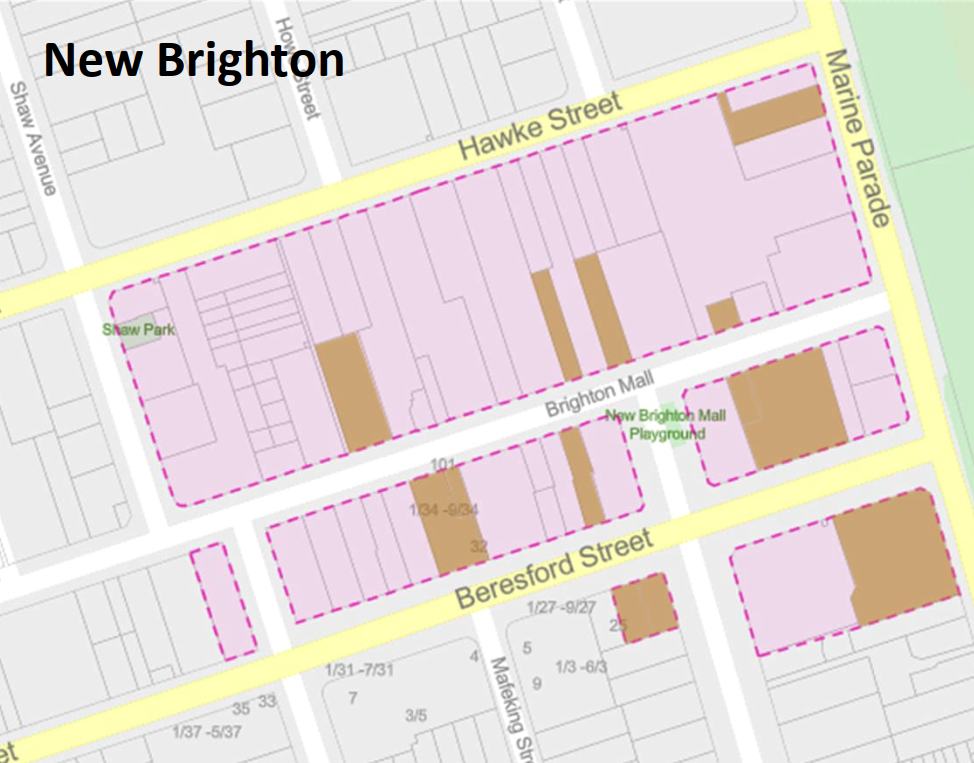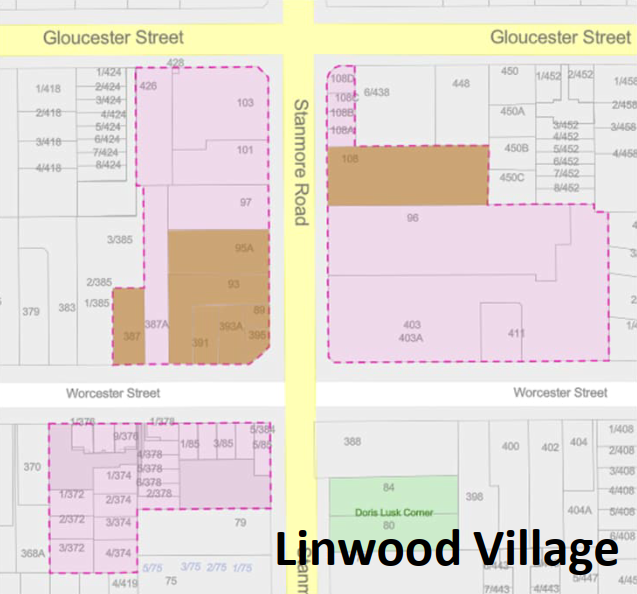All cities have vacant sites – they're part of the process of change. But Christchurch has more than its fair share. When vacant sites are neglected, they can undermine investment and detract from our aim to make Ōtautahi-Christchurch a great place to be.
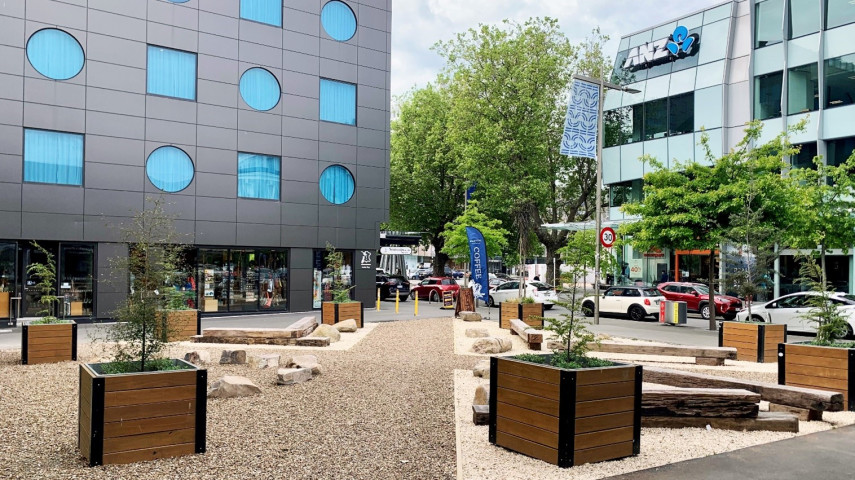
Download the vacant sites improvement guide [PDF, 16 MB].
Read about the City Vacant Differential Rate(external link).
The Vacant Sites Programme
Vacant sites are areas of land that have been cleared and lie unused or are put to temporary use as a stepping stone to permanent development.
In places where vacant land is concentrated and neglected, this influences perceptions and undermines the enjoyment of what our city offers.
Presenting our city in a better way will attract more people, more often. This will increase investor interest and development demand for vacant sites.
Our Vacant Sites Programme aims to:
- Support owners to progress plans for permanent development.
- Where permanent development is not expected straight away, we encourage owners to keep sites tidy and can offer support to activate sites in prominent locations.
Following the earthquakes of 2010 and 2011, thousands of buildings were demolished across Christchurch. This left our city with a significant legacy of vacant sites – especially in the Central City.
New buildings now occupy many of these sites, but we know that cleared land will remain a feature of Ōtautahi-Christchurch for years to come.
In the Central City, this is particularly apparent because:
- Changes in building size/efficiency and in business practices have resulted in the same amount of commercial space on smaller land footprints, or less space needed for workers or customer-facing services.
- Many businesses are still deciding whether to move back to the Central City.
- Since the COVID-19 pandemic, new thought has been given by developers to the changing role of urban centres. In particular, mixed-use development is creating more vibrant places for people to live, interact, do business, visit and enjoy.
These factors, as well as the owner's own circumstances, influence decisions about new development.
Opportunity or problem?
Both. Vacant sites provide Christchurch with great opportunities for development to meet the city’s future growth needs.
But while they remain undeveloped, particularly where they are unmanaged, they maintain visual reminders of the earthquake period, clouding perceptions of the new Ōtautahi-Christchurch and what it has to offer.
For example:
- Neglected and unkempt sites often harbour litter and weeds, are vulnerable to tagging, attract vermin, are dusty and have issues with stormwater run-off.
- Visitor surveys and community feedback regularly highlight that people find vacant sites unattractive and can feel unsafe around them. Large gaps between buildings break up the continuity of street activity and influence perceptions of safety – especially after dark.
- Impressions that our city remains broken can make people reluctant to visit, which in turn undermines investor confidence and deters commercial tenants and potential homebuyers.
The Vacant Sites programme currently has two priority areas.
1. The Central City's commercial core
Our programme is focused heavily on the heart of the Central City, given its function as a key employment and business centre, and a destination for retail, entertainment, and cultural and tourism activities.
Despite significant improvements in the Central City over the last few years, business, resident and visitor surveys consistently convey negative perceptions and highlight the impacts of unmanaged vacant land in the heart of the Central City.
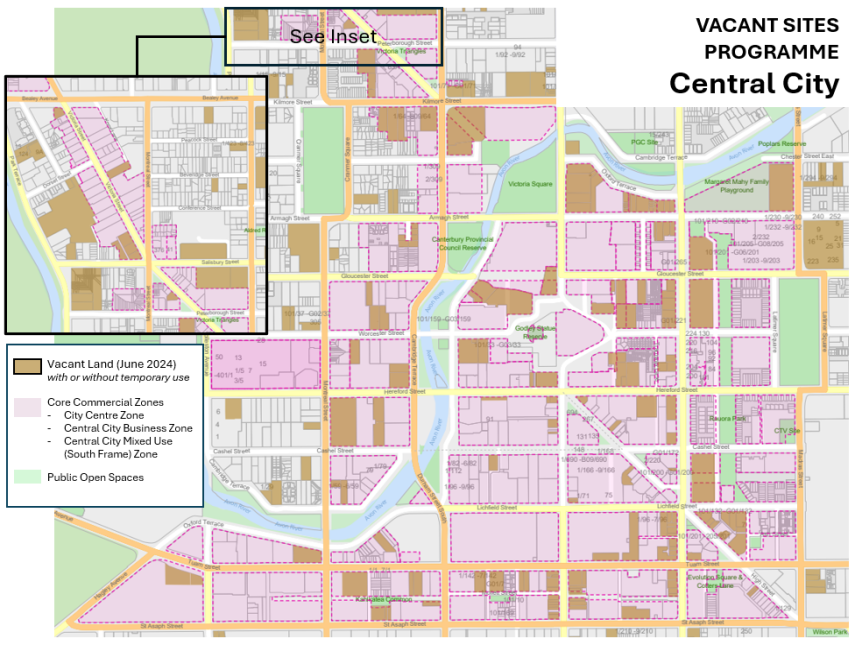
Download the map of the core commercial zones of the Central City [PDF, 388 KB].
The map shows the core commercial zones of the Central City in pink. The remaining vacant sites, as of June 2024, are shown in brown.
Given that the Central City is intended to be a public environment where people come to work, shop, visit, meet and enjoy it is important that vacant land in these areas is well presented.
As discussed below, these zones are subject to a new City Vacant Differential Rate introduced in 2022. This scheme incentivises owners to put vacant sites into a temporary use, or otherwise keep them in a state which adds to rather than detracts from the city experience.
In the surrounding residential communities of the Central City, the Central City Residential Programme - Project 8011 will use its neighbourhood planning workstream and tools in this programme to support development and prioritise site improvement.
2. Four suburban centres with high concentrations of vacant land
Since 2023 we have also focused attention on the commercial core zoned areas of New Brighton, Lyttelton, Linwood Village and Sydenham. These centres have vacant land that makes up more than 10% of their zoned commercial areas.
Maps of the remaining suburban centre's vacant sites [PDF, 250 KB].
The maps above show in brown the remaining vacant sites – with or without complying temporary uses of June 2024.
The Commercial Core zones (the Commercial Banks Peninsula Zone in Lyttelton) are shown in pink. As with the Central City, these centres are public environments where people come to work, shop, meet and enjoy so we are focused on supporting development activity and seeking that vacant land is well presented.
Our work in these centres has involved site improvement projects and advice to property owners about steps they can take to improve or activate sites. In New Brighton, this support is being provided by ChristchurchNZ’s Urban Development team as part of their wider economic development support in this important coastal centre.
Since 1 July 2024, we have also expanded the use of the City Vacant Differential Rate in these four centres to incentivise owners to make use of sites for temporary activity or keep them in a state which adds to rather than detracts from the local experience.
Elsewhere
While vacant land outside of the Central City and the four priority suburban centres is much less prevalent, unused sites can still create a nuisance that impacts adjacent property.
If you are affected in this way you may want to report this(external link) for us to determine any action to be taken.
After the earthquakes, there were more than 65 hectares of cleared land in Central City. When the Vacant Sites programme was initiated in 2020 that figure had fallen to nearly 50 hectares. For context, Cranmer and Latimer Squares are each about 2 hectares.
Since 2020 the amount of vacant land has fallen to 33.1ha – a drop of about 17ha.
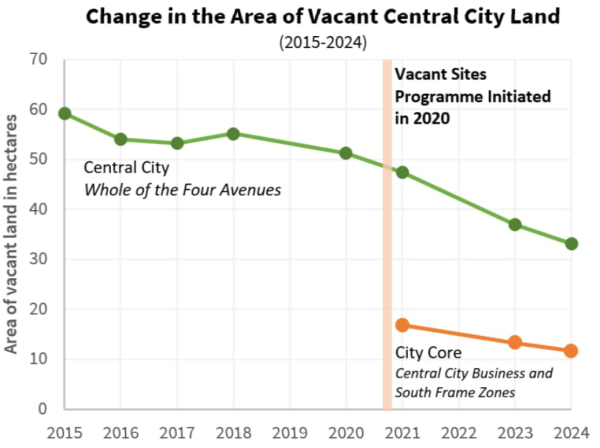
Construction of larger projects such as Te Kaha/Canterbury Arena (6.8ha), the Performing Arts Precinct and the Hospital Car Park are bringing large areas of land back into use.
Similarly, residential developments – delivering over 700 new homes in recent years - have emerged on a wide variety of sites across the Central City’s Four Avenues.
More recently, office development has begun to pick up again, reflecting new demand and the dwindling availability of existing space.
Within the Central City’s Commercial Core, about six hectares of vacant land has been/is being developed over the last 4 years including numerous residential schemes along the South Frame.
The links below provide maps of the extent of Central City's vacant land in 2021 and 2024 for comparison:
- Central City Vacant sites - September 2021 [PDF, 284 KB]
- Central City Vacant sites - June 2024 [PDF, 388 KB]
Temporary uses and site improvement
The Vacant Sites Programme has focused much of its activity on working with owners of land where permanent development is not expected in the next year or two.
Temporary car parks: Through communication, enforcement, consenting and compliance monitoring, the programme has guided the transition of gravel-pit car parks to facilities that better reflect the investment in our city’s buildings, streets and spaces.
Some before and after examples of improved sites are shown below.
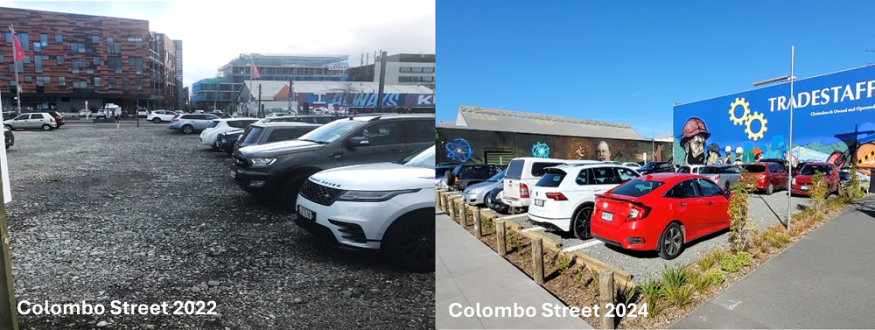
Colombo Street: 2022 to 2024.
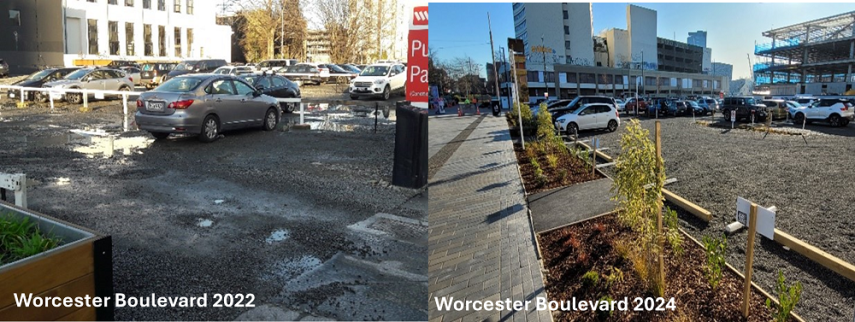
Worcester Boulevard: 2022 to 2024.
Construction support: A number of sites are being leased to support construction activity on adjacent land. Once the construction activity is completed, owners often negotiate that the site is left in a tidy state enabling a temporary use.
Site improvement: A number of site owners have invested in simple improvement of their sites. Good quality surfacing, lighting and planting can help lift the quality of the city experience. Where owners make this type of improvement – in line with our Vacant Site Improvement Guide [PDF, 16 MB] – owners qualify for a rate remission in the places where the City Vacant Differential Rate(external link) is applicable.
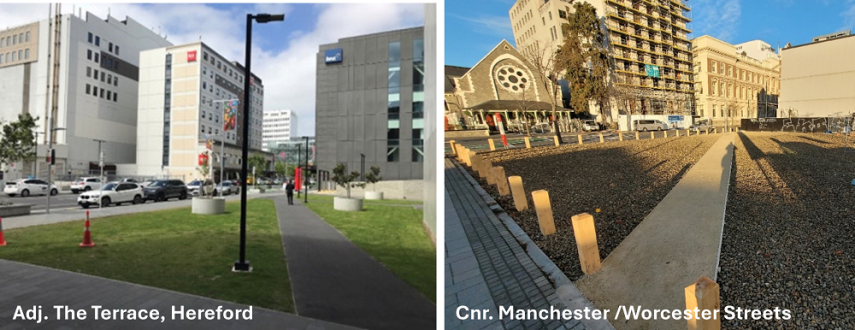
Adjacent The Terrace, Hereford Street / Corner Manchester and Worcester Streets.
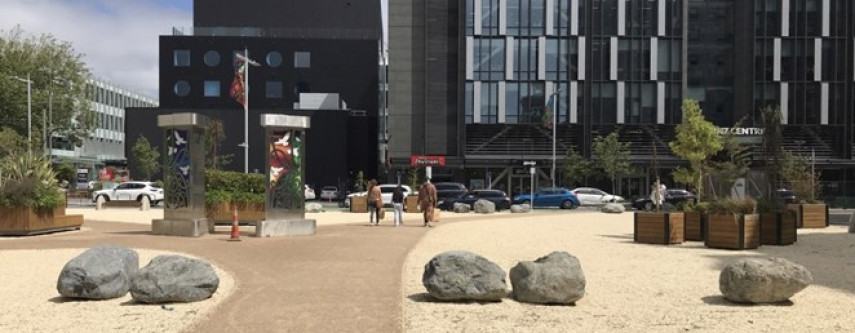
Corner of Hereford and Colombo Streets next to Cathedral Square.
Use and upkeep of vacant land where no development is currently planned
The chart below shows the change in how Central City's vacant land has been used and managed since 2020.
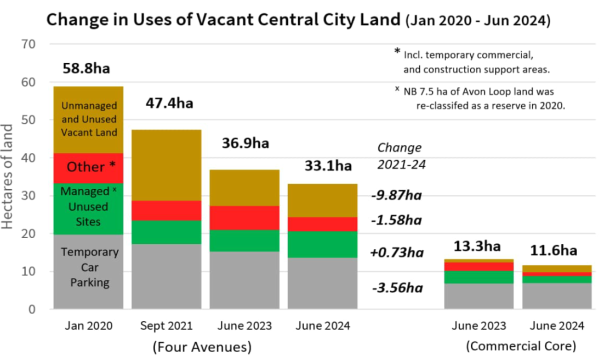
Key points:
- The amount of unmanaged Central City vacant land has dropped by half since 2020.
- The amount of temporary car parking has fallen steadily but remains the most common use of vacant sites - still offering space for around 6,500 vehicles.
- The amount of managed vacant land is growing, emphasising the efforts owners are taking to landscape previously abandoned sites, or managing grassed or gravelled sites.
- Land in other temporary uses is declining. Sites in temporary economic uses have remained constant, such as car sales/storage in the Central City Mixed Use Zone. However, sites being used for construction support have become less common – particularly as major projects have been completed. A range of temporary activities on the site of Te Kaha came to an end in 2022 when construction of the arena commenced.
- The commercial core of the Central City is a subset of the Four Avenues figures. In this area, over half of the vacant land is in use as temporary car parking. In the last year, a number of grassed development lots in the One Central residential area, between Manchester and Madras Streets, have been developed, contributing to a drop in the amount of managed unused vacant land.
In future years we’ll provide information about the change taking place in the use of vacant land in our priority suburban centres.
Information for owners of vacant sites
We’re keen to connect with site owners, to understand where you’re at in developing your site. We can put you in touch with people who can help you make progress, whether with permanent development or with improvements and/or temporary use.
You can update us on what you are doing via the contact form below.
We provide a range of services and support to developers, including:
- Pre-application advice for resource consents (external link)and building consents. Early advice can help you understand the rules and requirements for development projects, reducing the risk of running into issues further in the process.
- Free urban design advice to promote attractive and good quality design. View our online guides (external link)for tips on best practices.
- Case management support where a dedicated case manager provides you with a single point of contact to guide you and your contractors through the development process, including getting approvals from various parts of the Council.
- Incentives are offered for some development projects that will have wider community benefits.
Find out more information on how we can help you through the development process.
If your site is unimproved and/or within the priority locations identified in the section above, we’ll be in touch with you. We’d like to understand what your development plans are or what is holding you back from developing your site.
If you are not in a position to start developing your land, it’s important that you take steps to improve the appearance and upkeep of your site.
A great starting point is to download our Vacant Site Improvement Guide [PDF, 16 MB] which sets out some expectations of basic standards we expect of vacant sites. It includes information about how we can support you to bring your site to life through an activation project.
Take a look at examples of previous activation projects we have supported.
City Vacant Differential Rating
From 1 July 2022, we introduced a new differential rating category for vacant land in Central City – it is called the City Vacant Differential rate.
Since 1 July 2024, the City Vacant Differential rating has also applied to the commercial centres of Linwood Village, Lyttelton, New Brighton and Sydenham.

Between 2018 and 2022, we reached out to owners through the Vacant Sites Programme, connecting them to sources of support for new development projects, and encouraging those unready to redevelop to undertake simple site improvements.
While some owners responded, businesses and property owners who had already invested demanded that more was done to change perceptions of the city and its experience. The wider community supported this view.
In response, elected members asked staff to investigate tools to financially incentivise vacant site owners to either develop, encourage temporary uses of land or physically improve the appearance of sites.
Problem 1: Sharing the costs and benefits of Council’s investment.
Commercial centres are public environments where people come to meet, enjoy, shop, work, visit and learn. Within these centres, land benefits significantly from our general activities (being activities funded by the general rate) which include:
- Enhanced roads and footpaths, public spaces and parks, and access to parking.
- Libraries, art galleries, venues and recreation facilities.
- Events and promotions, activations and regular maintenance activities that reflect the impact of higher levels of public use and activity.
In addition, our infrastructure has been planned to cope with potential developments on vacant land and there are fixed costs we have to cover in providing connections to sites.
Vacant land, by its nature, has a lower capital value, since no improvements have been made to the land. Consequently, the general rates contributed by vacant land are low.
In a normal scenario, we would accept that some vacant land is always going to be present as part of the normal process of renewal and forego the expected general rating revenue from capital improvement of these sites.
In our abnormal situation, there are a large number of vacant sites and this has a substantial effect on the rating revenue we expect to gather. At the same time, we consider that the value of benefits that owners of vacant Central City land receive from our general activities are substantially above the rates currently being assessed on that land.
We consulted on this issue as part of the Long Term Plan 2021–2031. Submissions made at that time indicated strong support for action to improve the visual appearance of vacant Central City land. Following careful consideration, the Council voted to introduce a new City Vacant Differential for the general rate from 1 July 2022.
City Vacant Differential
The City Vacant Differential:
- Is set at a multiplier of the standard general rate which has the effect of approximately doubling the existing rating of a vacant site's capital value.
- This differential is a fairer approach that recognises that vacant land in the Central City benefits significantly from the Council’s general activities.
- Applies to areas where there are concentrations of vacant land, namely:
- The Central City Business and Central City Mixed Use (South Frame) Zones. Please note that the City Centre Zone will replace the Central City Business Zone as part of changes to the District Plan. From 1 July 2025, the City Vacant Differential rate will apply to vacant sites in the City Centre Zone as well as the Central City mixed-use (South Frame) Zone.
- The Commercial Core Zone in Linwood Village, New Brighton and Sydenham.
- The Commercial Banks Peninsula Zone in Lyttelton.
- Vacant land for the purposes of the City Vacant Differential is defined as land with no active or consented use. The definition excludes sites:
- That is permanently developed or under construction, or
- In a temporary use that is a permitted activity under the District Plan, such as supporting adjacent construction, or has an approved and fully implemented resource consent, such as temporary car parking.
- You can find out more about differential rates in the rating section of the Council’s Funding Impact Statement [PDF, 2.3 MB].
Problem 2: Incentivising owners without temporary land uses
As outlined in the introduction to the Vacant Sites Programme above, the community have demanded that vacant sites be brought into permanently or temporarily or otherwise improved and managed in a way that supports a vibrant, lively inner-city environment.
Temporary uses, while not currently making the best use of land, are considered to contribute to the economic wellbeing and functioning of the centre concerned. These uses – where permitted or consented – are required to meet built-form standards or conditions necessary to support that activity and integrate the land use into the cityscape. This also justifies their exemption from the City Vacant Differential rate.
But on some sites, because of their size, access, planning rules, or even owner preference, temporary uses may not be possible. In order to incentivise these owners to improve and manage their sites, we also introduced a new rates remission alongside the City Vacant Differential.
Remission 8: City Vacant Land
Remission 8: City Vacant Land is available, on a discretionary basis, to owners who keep their sites in an improved and maintained state that adds to, rather than detracts from, the city experience. We've set out broad standards in its Vacant Sites Improvement Guide [PDF, 16 MB] which sets out simple, cost-effective ways to qualify for the remission.
it also has the effect of cancelling out the increased cost of rates imposed by the City Vacant Differential. More information about Remission 8: City Vacant Land can be found in our Rate Remission Policy.
For rating purposes, the state of a vacant site during final inspections undertaken by council staff in June each year will determine its liability for or exemption from the City Vacant Differential for the whole of the following financial year which commences on 1 July.
The inspections will also determine whether any improvements made during the year enable the site to qualify for the rate remission.
Ahead of the final inspection in June, all vacant sites are provisionally reviewed between February and April. These reviews check on the current consented status of uses and involve a visual inspection where the site is photographed.
Specifically, the reviews consider:
- Whether any temporary use has a current resource consent or is a permitted activity. Please note that gaining consent or renewal of consent – and implementing any associated conditions – may take 3 to 6 months. It will be the responsibility of owners to set aside enough time to secure consent or renewal in advance of 30 June in any given year.
- Whether the current resource consent for the site use is fully implemented – particularly in relation to conditions that contribute to the site’s appearance, such as landscaping, access points, and layout.
- Whether unused sites are improved in line with the Vacant Sites Improvement Guide [PDF, 16 MB].
- Whether the site’s general level of upkeep - litter, health of planting, graffiti, safe pedestrian access, etc. - is acceptable.
Where, after the first inspection, normally completed in March, a site is deemed liable, owners will be written to, normally by 30 April, highlighting the current reasons for that assessment. This early warning allows time for remedial action to be taken by the owner before the final surveys in June. Please note that remedial action does not include the process of securing or renewing a resource consent.
Final surveys in June record the state of the site, capture photographic evidence and make a determination as to whether sites are liable, exempt or qualify for the remission. We will track site progress right up to 30 June as required.
The City Vacant rate/rate remission was first applied to sites:
- In the Central City from 1 July 2022.
- In the four Suburban Centres from 1 July 2024.
In the first years of the scheme’s application, some degree of discretion was applied to the degree of compliance of sites with required resource consent conditions or built-form standards.
From 1 July 2024, and 1 July 2025 for Suburban Centres, all sites will be required to meet these standards to secure exemptions or rate remissions.
Central City
| 2021 (Pre-CVDR) | 2022 rating | 2023 rating | 2024 rating | Change since 2021 | |
|---|---|---|---|---|---|
| Number of rating units in scope | 212 | 197 | 186 | 188 | -24 |
|
Exempted rating units |
65 | 92 | 75 | 101 | +36 |
|
Rating units with remission |
16 | 20 | 27 | 24 | +8 |
|
Liable rating units |
131 | 79 | 81 | 63 | -68 |
Map of exempt, liable and remitted Central City sites as of 30 June 2024 [PDF, 1005 KB].
Linwood Village
Please note that the 2023 data shown for provisional assessments prior to the City Vacant Differential rating being applied from 1 July 2024.
|
2023 (Pre-CVDR) |
2024 rating | |
|---|---|---|
| Number of rating units in scope | 8 | 8 |
|
Exempted rating units |
1 | 2 |
|
Rating units with remission |
0 | 4 |
|
Liable rating units |
7 | 2 |
Lyttelton
| 2023 (Pre-CVDR) | 2024 rating | |
|---|---|---|
| Number of rating units in scope | 17 | 16 |
|
Exempted rating units |
8 | 10 |
|
Rating units with remission |
1 | 3 |
|
Liable rating units |
8 | 3 |
New Brighton
| 2023 (Pre-CVDR) | 2024 rating | |
|---|---|---|
| Number of rating units in scope | 12 | 13 |
|
Exempted rating units |
2 | 5 |
|
Rating units with remission |
0 | 2 |
|
Liable rating units |
10 | 6 |
Sydenham
| 2023 (Pre-CVDR) | 2024 rating | |
|---|---|---|
| Number of rating units in scope | 20 | 19 |
|
Exempted rating units |
5 | 4 |
|
Rating units with remission |
1 | 1 |
|
Liable rating units |
14 | 14 |
Maps of the exempt, liable and remitted suburban centre sites as of 30 June 2024 [PDF, 361 KB].
Contact us
If you have any questions or would like to discuss opportunities to improve or develop your site, contact us at urbanregeneration@ccc.govt.nz or by using the form below. We will respond to all enquiries within five working days.
Related news

Plans for New Regent St extension
Pedestrian access from one of the Central City’s favourite attractions – New Regent Street – is set to be extended through to the Ōtakaro Avon River promenade.
3 Dec 2025
Christchurch withdraws from further housing intensification
Christchurch’s bid to opt out of further housing intensification has been accepted.
10 Nov 2025
Spark an open-air romance with music this summer
Mitre10 Sparks is set to dazzle in 2026 with a special Valentine’s Day-themed extravaganza.
10 Nov 2025
